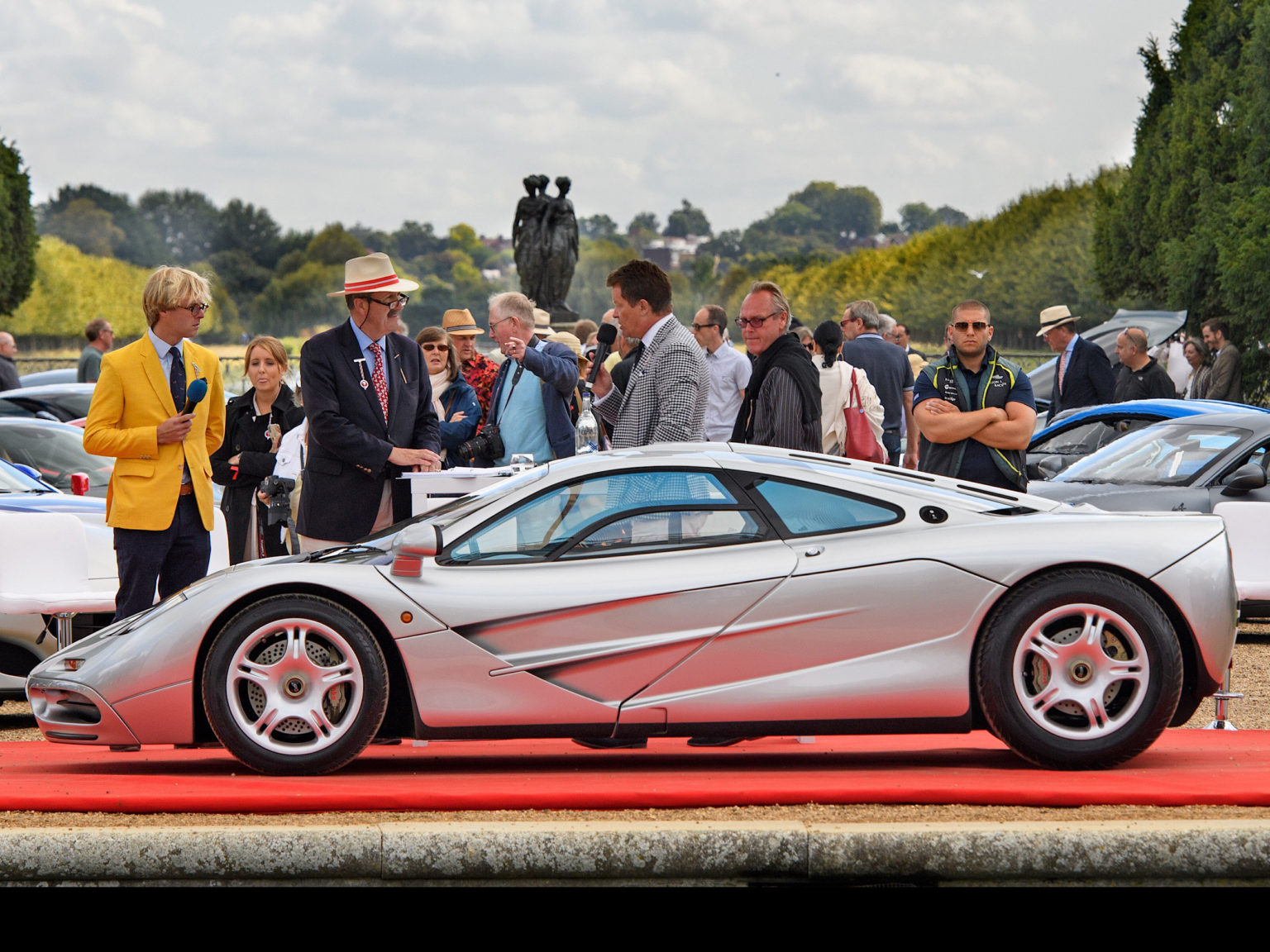The F1 wasn’t like anything the world have ever seen before. It was a no-compromise model and is now one of the most sought-after cars in the world.
It’s story starts in 1988 when then-McLaren designer Gordon Murray was flying back from the 1988 Italian Grand Prix. The flight was delayed so Murray took the opportunity to sketch some ideas for a high-performance three-seater car. He then went on toe persuade Ron Dennis and other McLaren managers at the time to build the most intriguing road car ever conceived.
McLaren F1 chassis no. 63 at Hampton Court during Salon Prive.Photo courtesy of Sale Prive
The car’s body was sculpted by designer Peter Stevens from Murray’s sketches. It was shaped to cut through the air but remain stable without needed wings. Only the airbrake would deploy when necessary. Like Murray’s later T.50, the car’s three-seat arrangement put the driver at center stage.
The F1 has the world’s first carbon-fiber tub chassis – something that is quite common among supercars these days. That tub took 3,000 man-hours to make. The car featured a titanium subframe and magnesium alloy wheels, which factored into the idea of making the car as light as possible. Even the toolkit was titanium, as a means of saving weight.
At the model’s heart is a 620-brake horsepower 6.1-liter V12 engine that was developed by Paul Rosche and the team at BMW Motorsport. It’s top speed was over 230 mph. The heat it put out was so hot, McLaren needed to line the engine bay. What material did they choose? Pure gold, of course.
The engine is paired with a manual gearbox. The steering and brakes are unassisted.
Big brother was always watching. On-board diagnostics transferred data to the factory so every single one of the 64 road cars made could be monitored for performance.
McLaren made a promise. If a customer had a problem with their F1, McLaren would fly out a technician to fix it. Alternately, there were eight official service centres worldwide.
Even priced at £540,000, McLaren didn’t profit from the car.
However, for owners, purchasing the F1 became a solid investment, if they were willing to play the long game. According to the Hagerty Price Guide, until 2006 F1s were changing hands for just over the original asking price, but by 2008 prices began to rise and the F1 was valued at £1.5 million.
It’s only gone up from there. By 2014 the cost was over £5 million. In 2015, Mr. Bean actor Rowan Atkinson sold his F1 for £8 million, despite crashing it twice and making what was at the time possibly the world’s biggest auto insurance claim.
In 2017 chassis no. 44 sold at Bonham’s Quail Lodge Auction for $15.6 million (£12.1 million at the time), while the Hagerty Price Guide now values the cars at in excess of £16 million.








